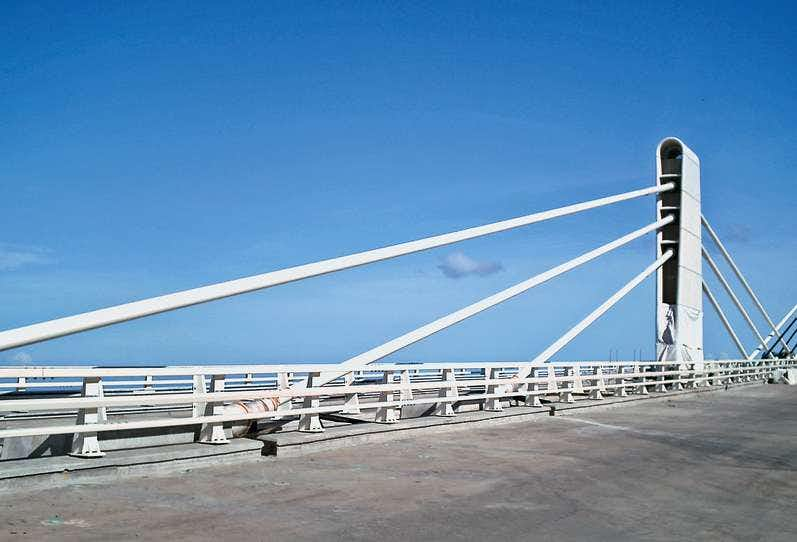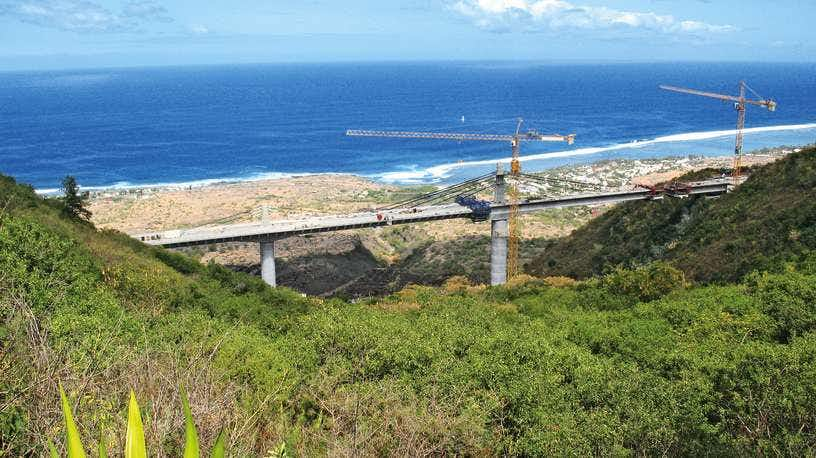Construction of a Coastal Road on La Réunion Island
In 2002, a decision was made to substantially improve the Reunion Island’s poor coastal road network in order to attract more tourism.
Context
The French island La Réunion, situated in the Indian Ocean, is noted for its many steep gorges. At one time, the island’s jagged structure made the construction of a modern road network seem almost impossible. However, the ambitious construction project “La route des Tamarins“ started in 2002. It includes the construction of a 33.7 km long expressway. The route is to lead through the island’s fissured and mountainous regions, traversing more than 120 canyons along the way.
Due to difficult geological conditions, the route will include three tunnels and a total of 23 bridges. The project is exceedingly challenging because of climate conditions and the need for environmental protection.
The project’s total cost is estimated to be more than 970 Million Euro and construction works are scheduled to be finished at the beginning of 2009. DYWIDAG contributed to one of three sub- projects classified as exceptionally artful structures: the bridge crossing the broad Trois Bassins gorge. Construction work was executed by a consortium consisting of Eiffage TP, Groupe Razel and Matière. Trois Bassins is an extradosed bridge. Extradosed post-tensioning (French “extradossée”, literally “out from the back”) is characterized by the fact that the tendons of a hyperstatic structure are “lifted out” from the bridge deck and deviated over an intermediate compression member, thus increasing the lever arm. The vertical reaction is directly transferred into the bridge pier below. Like stay cables, extradosed tendons can withstand long-term atmospheric influences including sunlight.
Lösung
The bridge has a total length of 375 m and a width of 22 m. The impressive sub-project required a total of 14,000 m³ of concrete, 1,800 t of steel and 400 t of prestressing steel. DYWIDAG supplied 352 DYWIDAG Post-Tensioning anchorages, types MA 6812 and MA 6819 as well as 36 VC 6819 anchorages for external Post-Tensioning. In addition, DYWIDAG supplied 34 DYNA Grip DG-P37 anchorages, tendon shea thing and approximately 105 t of galvanized, waxed and PE-sheathed strands.
A special feature of these stay cables is the fire protection that was applied over their entire length. According to specifications, the strands are designed to reach a maximum temperature of 100 °C with a fire temperature of 1,100 °C. This is achieved by enveloping the installed strand bundle into a double-layered fire protection mat. Subsequently, PE half shells are assembled on top of the double-layered mats. Due to the small inclination of the stay cables and the small diameter of the pylons, cradles, which were also included in the delivery, were installed in the pylon instead of individual anchorages.
One of DYWIDAG’s experienced installation engineers was at hand during installation.
The installation of the DYNA Grip stay cables with fire protection was successfully completed in spring 2008.






